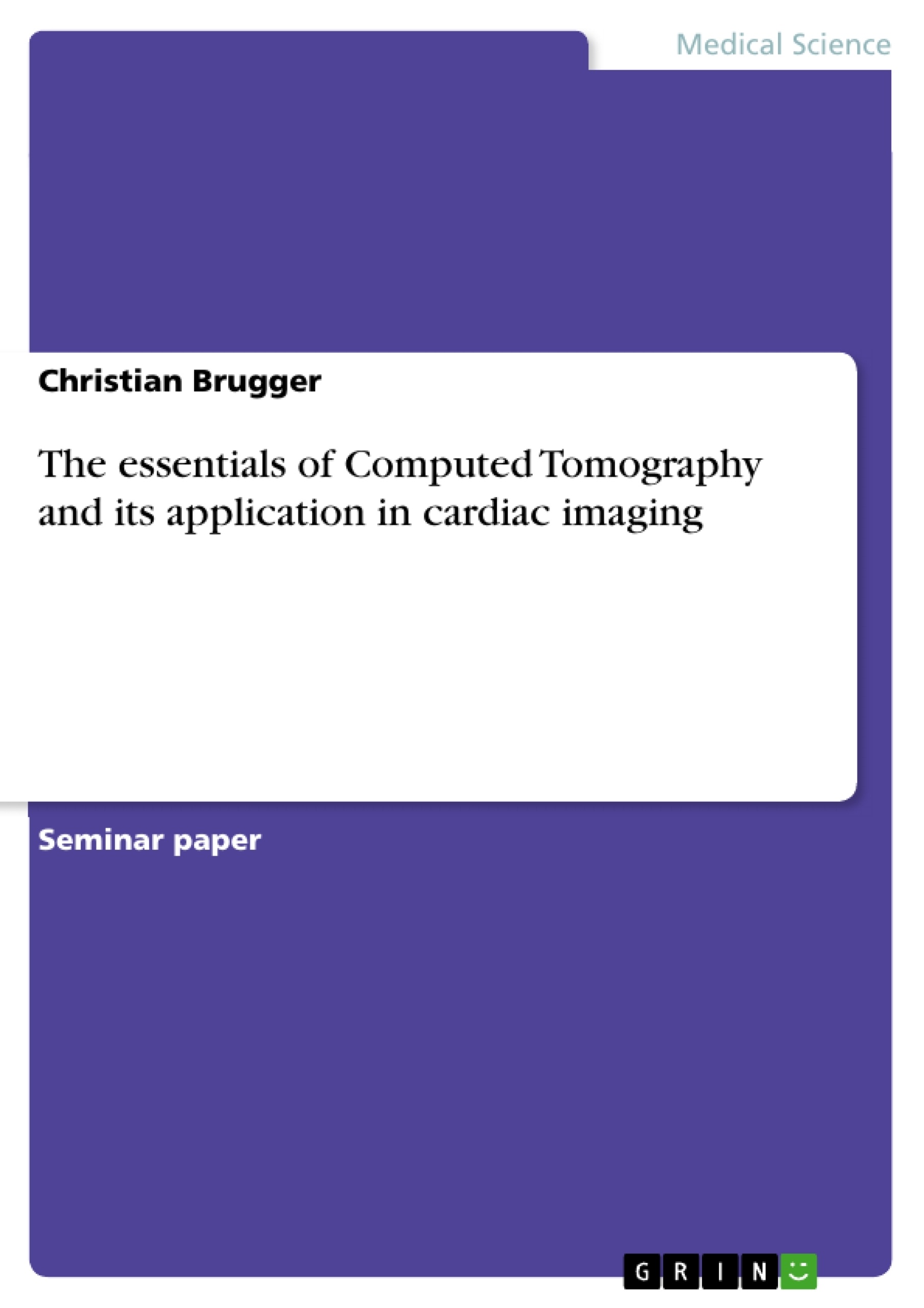This paper introduces into the essentials of computed tomography and gives a brief lead-in to Cardiac CT, which is the clinical application of computed tomography in cardiac imaging. At first, the usage of X-rays is explained and the resulting main task of a CT scanner: The reconstruction of a three-dimensional image from the X-ray shadows, that are captured by the digital radiation detector unit. This reconstruction problem is known as the inverse problem in mathematics, which was initially solved by Johann Radon. Transferred to the field of computed tomography, the inverse problem means the definition of a volume dataset by reconstruction algorithms like for instance the Fourier Transform, which is shortly introduced, as well as the filtered backprojection. The main issue of Cardiac CT is the steady movement of the heart and chest of an examined patient. To ensure high image quality the scanner is triggered by a concurrently recorded ECG. ECG Triggering can ensure that the scanner only captues
images during the phases of the heartbeat, where movement is minimal. One major application of Cardiac CT is non-invasive coronary angiography, which possibly could substitute invasive diagnostic surgeries like cardiac catheterization of non-emergency
patients.
Inhaltsverzeichnis (Table of Contents)
- Abstract
- Introduction
- Computed Tomography
- X-rays (Roentgen rays)
- Inverse Problem
- Image Processing
- Radon Transform
- Fourier Transform
- Filtered backprojection
- Cardiac CT
- ECG Triggering
- Coronary CT Angiography
- Bibliography
- List of Figures
Zielsetzung und Themenschwerpunkte (Objectives and Key Themes)
This paper provides an overview of computed tomography and its application in cardiac imaging, specifically Cardiac CT. It explains the fundamental principles of X-ray generation and detection, the inverse problem in reconstructing three-dimensional images from X-ray shadows, and the role of algorithms like the Fourier Transform and filtered backprojection.
- The principles of computed tomography and X-ray generation.
- The inverse problem in image reconstruction from X-ray shadows.
- The role of algorithms like the Fourier Transform and filtered backprojection.
- The challenges and solutions for cardiac imaging with CT.
- The application of Cardiac CT in coronary angiography.
Zusammenfassung der Kapitel (Chapter Summaries)
- Introduction: This chapter introduces the history of computed tomography, highlighting the invention of X-rays and the development of CT scanners. It emphasizes the importance of reconstruction algorithms and the evolution of CT technology from slow, radiation-intensive methods to modern, fast, and low-radiation scans. The chapter also outlines the increasing application of CT in medical diagnostics, especially in emergency medicine.
- Computed Tomography: This chapter delves into the core principles of X-ray generation using X-ray tubes. It explains how X-rays interact with tissues based on density and how the resulting attenuated radiation is measured by detectors. The chapter introduces the inverse problem, a mathematical challenge in reconstructing images from X-ray projections.
- Image Processing: This chapter explores the various algorithms used to process and reconstruct images from X-ray data. It focuses on the Radon Transform, Fourier Transform, and filtered backprojection as key methods for creating interpretable images.
- Cardiac CT: This chapter addresses the challenges of imaging the moving heart. It explains the use of ECG triggering to synchronize the scanner with the heartbeat, ensuring high image quality. One major application of Cardiac CT, coronary angiography, which potentially replaces invasive diagnostic procedures, is also discussed.
Schlüsselwörter (Keywords)
Computed tomography, X-rays, inverse problem, image reconstruction, Fourier Transform, filtered backprojection, Cardiac CT, ECG triggering, coronary angiography.
- Citation du texte
- B.Sc. Christian Brugger (Auteur), 2011, The essentials of Computed Tomography and its application in cardiac imaging, Munich, GRIN Verlag, https://www.grin.com/document/176173



